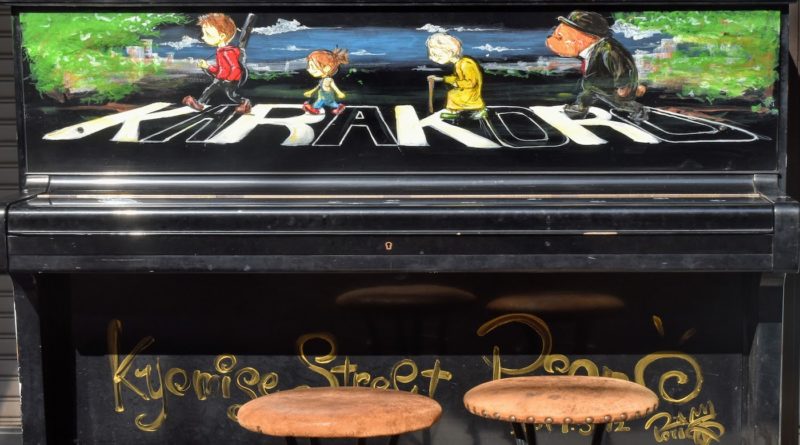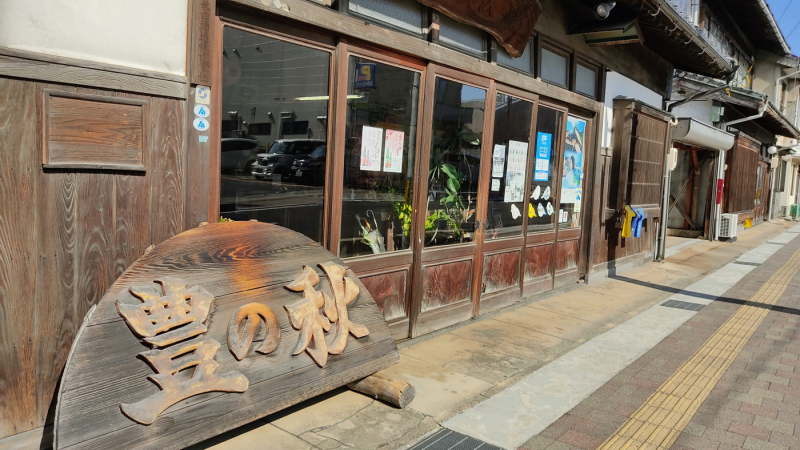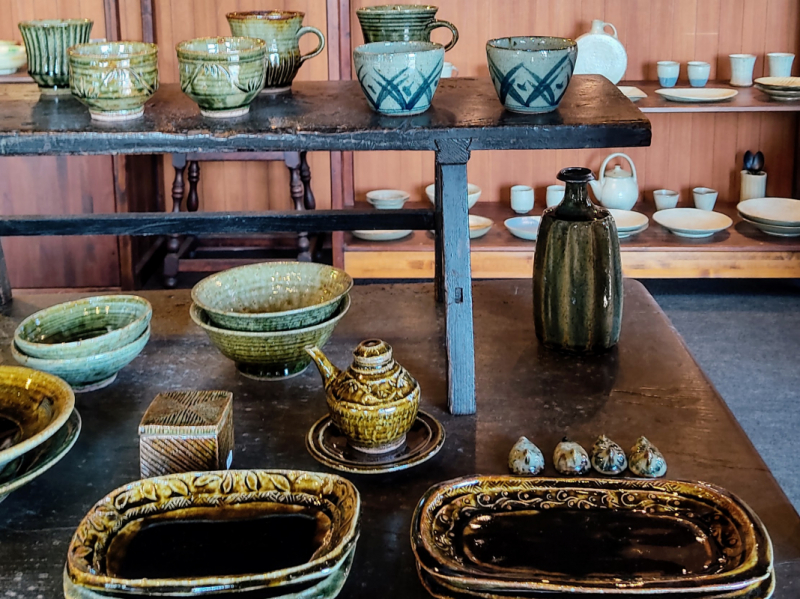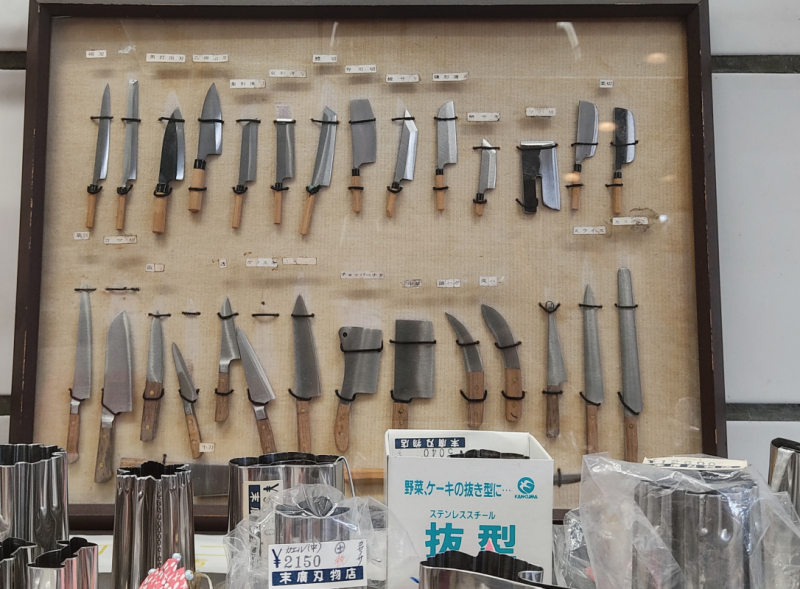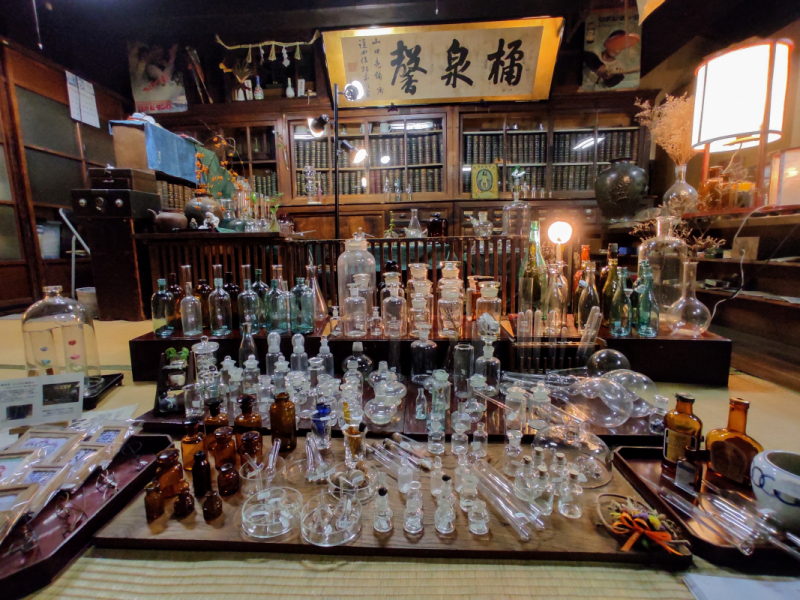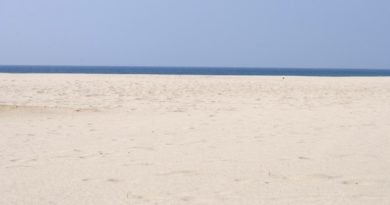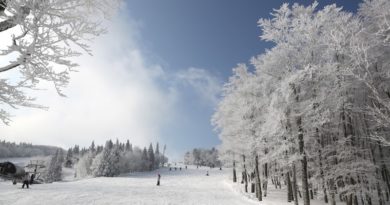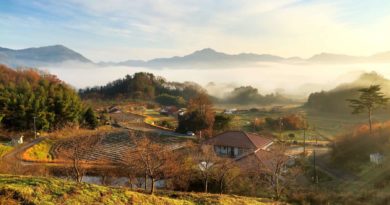Matsue’s Surprising Kyomise District
If you are looking to get off the beaten track in Matsue, a good place to start is the Kyomise district that is sandwiched between the Ohashi and Kyobashi Rivers. It’s a great place to explore if you love digging around in old Japanese shops and rubbing shoulders with locals.
The name Kyomise [京店] is made up from the kanji characters for capital kyō [京] (the first character in Kyoto) and for shop mise [店] and is said to have been bestowed upon the area nearly 300 years ago when a princess remarked upin its resemblance to a street in Kyoto. Still today, although there are many far more modern buildings in the area, parts of Kyomise conjure up images of eras past.
On my arrival in Matsue, I noticed that the main Kyomise Shōtengai shopping street is bookended by two sake breweries, Yoneda Shuzo at the eastern end and Kokki Shuzo to the west. After lining my stomach with the riverside Coffee Kan’s version of an English breakfast, it seemed perfectly reasonable, then, to start at one of them and work my way towards the other, making sure to poke around the side streets on my way.
I opted to start at Yoneda Shuzo, the producers of Toyo-no-aki sake brand (brewed just a stone’s throw away across the river).
Founded in 1896, its founder, a cartoon image of whom features on some of their sake labels, chose the name Toyo-no-aki to express hopes for a bountiful autumn harvest. It’s mellow taste and clean finish make it a great option for people dipping their toes into the world of sake and has been highly rated for many years. It was the sake offered to first class passengers on Japan Airlines for 14 years. Even if you are not particularly interested in sake, the brewery’s retail store on Kyomise Shōtengai is a wonderful old building full of atmosphere worthy of appreciation.
Once inside, though, it would be a great shame not to sample some of the breweries sake. A very friendly lady who spoke not a lick of English happily served me 5 kinds of sake to sample. This made me feel quite friendly too. A nice touch here is that there are little cards free to take which explained the characteristics of each of their most popular sakes in English. Traveler-friendly small bottles are available as well as the larger party bottles as well as lots of sake-related items which would make great gifts or souvenirs.
After gingerly stepping back out into the street, I noticed an interesting-looking building down a side street near the Ohashi River and decide to investigate. The clearly western influenced stone and brick building is in complete contrast to the sake shop, but its design is intriguing. The set of reliefs on a flattened corner depict children monkeys, goats and other animals.
A faded sign reads “Men’s Wear” and according to a plaque the building, built in 1918, used to house it is a former custom tailor. A corner of the building next to the river has been refurbished and now serves as a wonderful store called Objets, run by a stylish young couple, selling pottery and ceramics. Many of the pieces are made in kilns located in the local area, some within the city itself.
As you might expect of in a city where Japanese tea and the culture surrounding it have flourished for two and a half centuries, you will find many tea and wagashi sweet shops in and around Kyomise. As well as traditional places such as Fugetsudo, you can also find some more modern interpretations of matcha drinks and desserts at Scarab Tea Cafe and a bizarre line up of skewered dango rice dumpling flavors at Tsukigase.
There are all manner of little shops around Kyomise which would take days to explore, and who knows what treasures might reveal themselves to the committed digger. Kurashi-mono Moriwaki is packed with more pottery, much of it from the same kilns as on display at the above-mentioned Objets, but this place is delightfully ramshackle.
If cooking is your thing, you may like to pop in to Suehiro Hamono, a long-running purveyor of knives, the owner of which, despite knowing only limited English, is very welcoming.
More refined dining ware and decorative nik naks are to be found at Yakumo-nuri Yamamoto, another of the many businesses in Matsue that have been trading for well over a hundred years. Matsue’s laquerware is said to be unique, as the the Yakumo-nuri technique results in products that brighten in color and as the product ages and the lacquer becomes more transparent.
After recharging with a very well poured latte at riverside cafe Little Court Coffee, the sun was starting to set and my thoughts were turning to heading to Lake Shinji to watch what promised to be a glorious sunset. My final port of call in Kyomise was perhaps the strangest, the Yamaguchi Pharmacy, which was recommended to me by a local. Pushing open the door with some trepidation and friendly woman welcomed me inside and told me I was free to look around. This Chinese medicine dispensary is said to have been around for almost 25 years, though the current building is said to date from between 100 and 150 years ago. The place looks like a museum with all kinds of random things on display, but apparently it is still a working pharmacy that is only open at night.
It was all very strange and seemed rather appropriate perhaps that that lover of Japanese ghost stories, the writer Lafcadio Hearn is said to have picked up his favorite beer from here back in the day. You may not be brave enough to have a prescription filled out, but you might find something to buy amongst the old test tubes and jars etc available for sale.
As I make my way back along Kyomise Shōtengai to the catch my bus back to Hiroshima (currently ¥500 if you show a non-Japanese passport when buying a ticket at the ticket office) the character of the area is changing. Foot traffic is light due to the COVID-19 pandemic, but, as the shops close, light from restaurant and bar doorways and windows start to spill out onto the street. Surprised by the variety of bistros, I resolve to return (hopefully in the spring) to experience another side of this fascinating area.
Non-Japanese passport holders can currently take a direct express bus between Hiroshima and Matsue for only ¥500 if you purchase your ticket in advance and agree to filling out a simple questionnaire. Note that ticket offices may only open after the first departure of the day.
More articles about Matsue
・Let culture wash over you in Matsue
・Tea culture for all in Matsue
・Matsue’s Surprising Kyomise District


